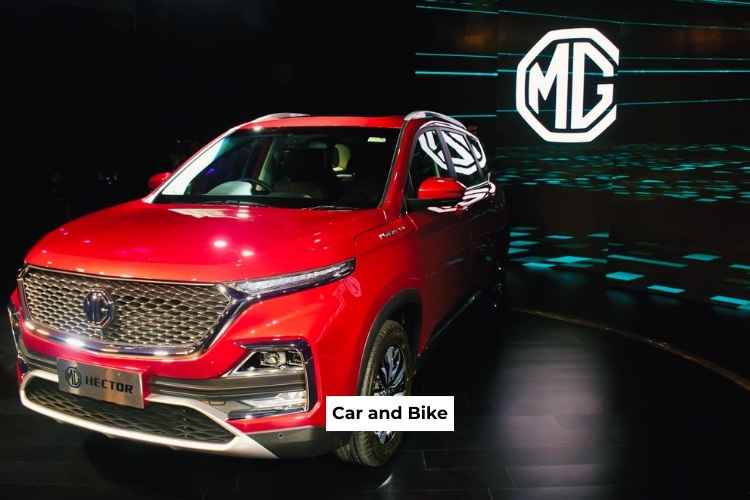Car and Bike: GST 2.0 is the government’s next-generation Goods & Services Tax reform (announced in September 2025) that simplifies tax slabs and lowers the GST on a large portion of automobiles and two-wheelers, moving many items formerly taxed at 28% into an 18% slab (and consolidating most other consumer goods into 5% or 18%). The reform eliminates/changes various cess rules and reclassifies many auto components, which together reduce the tax burden on final vehicle prices. The official press release explains the two-slab move and the rationale for simplified taxation.

Table of Contents
How GST 2.0 reduces Car and Bike prices
Think of a car’s price as: (manufacturer cost + profit + taxes). Two things in GST 2.0 push prices down:
- Lower GST slab on auto components/vehicles — a move from 28% → 18% for many parts and finished vehicles reduces the tax load that manufacturers and dealers pass on to buyers.
- Removal/simplification of cesses and reclassification — this reduces hidden tax layers and compliance costs, enabling more transparent, lower prices.
Example: if a car had ₹10 lakh taxable value and faced an effective 28% tax (plus cess), moving to 18% lowers tax by roughly ₹10,000s — which manufacturers often pass on as price cuts to stay competitive.
Car and Bike: Who benefits most?

- Entry-level hatchbacks and mass-market two-wheelers: high volumes + price sensitivity → big % gains for buyers. Many models dominant in India’s sub-350cc two-wheeler market showed notable reductions.
- Mid-range SUVs and sedans: model-wise cuts vary; some brands passed on substantial amounts (lakhs), especially where previous cess or higher slab applied.
- Premium EVs: often unaffected if they already fell under different tax treatment or incentives – price changes depend on the exact tax reclassification.
Table – selected Car and Bike: pre- vs post-GST change
| Brand / Model (representative variant) | Reported Reduction (ex-showroom) | Rough % |
|---|
| Maruti S-Presso (select variants) | Up to ₹1,29,600 | varies (up to ~19%) |
| Maruti Alto (selected variants) | ₹53,100 – ₹1,08,000 | up to ~19.9% |
| Maruti Fronx / Brezza / Swift (selected) | Up to ₹1.12 lakh (model & variant dependent) | — |
| MG Hector | ~₹1.49 lakh (max reported) | — |
| MG Gloster | ~₹3,00,000 (max reported) | — |
| Jeep Compass / Wrangler / Meridian | Up to ₹4.84 lakh (model dependent) | — |
| Royal Enfield Meteor 350 | ~8.2% reduction (variant dependent) | ~8% |
| Bridgestone tyres (retail) | Price reductions reported (post-GST pass-through) | — |
Conclusion
GST 2.0 Car and Bike is a meaningful structural change: simpler slabs + targeted reductions that translated into real, immediate price cuts for many cars and bikes. If you’re in the market, now is a sensible time to compare updated variant Car and Bike price lists, re-run EMI numbers, and lock in deals — but do confirm on-road costs at your dealer.
For quick action: pick 2–3 target models, request the manufacturer’s post-GST variant list (many OEMs posted them), ask your dealer for an itemised on-road quote, and compare financing offers. The savings from GST 2.0 can be genuine — whether you care about monthly affordability (EMI) or total cash outlay.
FAQs
Q: When did GST 2.0 take effect for vehicles?
A: The updated GST structure and many vehicle tax changes were implemented around 22 September 2025, following announcements in early September 2025. Check official releases for exact effect dates in your state.
Q: Will EV prices fall under GST 2.0?
A: It depends — many EVs already have distinct tax treatment or incentives. Some EVs saw no change if their tax classification didn’t change. Check manufacturer statements for model-level updates.
Q: Are on-road prices guaranteed to drop by the exact amount shown in ex-showroom lists?
A: Not guaranteed — on-road includes other charges (RTO, insurance) that remain. Use ex-showroom reductions as a guide.
Bhakti Rawat is a Founder & Writer of InsureMyCar360.com. This site Provides You with Information Related To the Best Auto Insurance Updates & comparisons. 🔗
